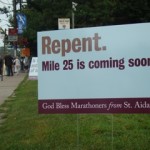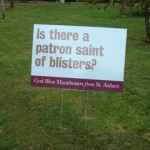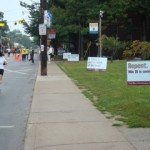Where is our Church now, and where do we want it to be in 2019?
I appreciate deeply where our church is now – wrestling, seeking, working to understand how God is calling us today, and exploring new forms of discipleship. It is easy to criticize ourselves for how we are failing – and I can be at least as critical as the next person. (Perhaps even more since I am now retired and don’t have the responsibility I once carried!) But I have to say that there is so much I cherish in the church, and I am grateful to be a member of it.
For some years I was fortunate to serve in the Diocese of Cariboo and, most recently, in the Anglican Parishes of the Central Interior. When our name was ‘Cariboo’, I delighted in belonging to a family that truly was a family. When we became the Anglican Parishes of the Central Interior, that sense of belonging continued (and continues.) But there was a wound in our life – one that resulted from the dreadful legacy of our colonial history, including that of the Residential Schools. Many persons in the schools suffered loss of identity. When the diocese was winding up its operation, Bishop Jim Cruickshank noted that now “we would no longer have Cariboo as our name”. In some small way, we were being called to learn something of what losing identity was about. But mostly God was asking us learn to be brothers and sisters in a new way. Perhaps it took us into a place where we were discovering something about healing. I long for a church in which we understand that healing – the healing of our souls, our neighbourhoods, our church, our world – begins when we acknowledge the wounds we have caused and those we have received, admit our need and pray for mercy and grace, recognize our deep need for each other, and seek the risen life offered through the wounds of Christ. My wife loves to quote a favourite phrase from U2, ‘We get to carry each other.” Indeed, that is what sharing in the cross is about. Resurrection finds its beginnings in wounds. I was thankful to share in a community of persons who had experienced a deep injury in our common life, carried each other and sought to hear God’s voice of new life in the midst of that.
For nearly a year now, I have been privileged to belong to an urban Toronto parish that is seeking to grow more deeply in discipleship. Like many urban churches, it has an old and large heritage building that is immensely costly. It was built for another age when church-going was integral to the culture. Yet even with the frustrations that come with such a plant, my sense is that the primary question at the heart of the parish’s life is mission. How will we serve God in our neighbourhood and world? How will we faithfully “proclaim by word and example the good news of God in Christ”? Many are engaged in some form of outreach – with young people, the homeless, the hungry. And, it seems, there is a willingness to listen to what the Spirit is saying through people in the wider community. It is a kind of paying attention that assumes God is calling us through other voices outside the church and in events that take place in the neighbourhood.
Last Sunday (September 27) was billed as ‘Back to church Sunday’ in the Diocese of Toronto. Vested in copes and mitres, The Toronto bishops greeted commuters at Union Station with an invitation. With other churches, members of our parish were encouraged to invite non church-going friends (or formerly church going friends) to come and see. As it turned out, Queen Street East, the main thoroughfare on which our church is located, was going to be blocked to traffic on that Sunday from 8.00 a.m. to 2.00 p.m. for a major marathon. Travel by car or public transit was not possible. My first response was frustration and disappointment – not a particularly helpful or faithful response! But leaders in the congregation started an email conversation and turned the occasion into a moment of mission. 4000 marathoners would be running by St. Aidan’s – how could the parish reach out to them? The idea of lawn signs welcoming and encouraging them was born. Signs greeted the marathoners that had the following captions: “Is there a patron saint of blisters?” ‘”Repent. Mile 25 is coming soon”, “Hit the wall? Come in and pray”. At the bottom of each were the words “God Bless Marathoners – from St. Aidan’s”. A lot of people saw those signs. Some of the runners paused to take pictures, others wore a broad smile. When the priest was taking the signs down after the run, a race marshal came to tell her “This was a tough part of the race, and many runners got a laugh and encouragement.” That is mission – paying attention to what is going on and speaking to it as Christians with humour and grace.
Learning to be brothers and sisters in a new way.
Carrying each other in this broken world.
Paying attention to what God is saying to us from beyond our walls.
Engaging the world with creativity and compassion.
Keeping a sense of humour.
It seems to me that these are gifts we already have – at least in seed form. When I dream of the Church of 2019, or any age, I hope that the seeds that are already present might be nurtured and flourish so that “we and all God’s children might be free and the whole earth live to praise God’s name.” I am glad to be a member of Christ’s body engaged in this sort of mission today.
Gordon Light,
St. Aidan’s, Toronto










Thank you for such an inspiring article.
Love your creativity for a special event like the road race. I remember running a road race on Good Friday, so I used a marker to write this text on the back of my shirt to witness to the other runners, “But God demonstrates His own love toward us, in that while we were yet sinners, Christ died for us.” [Romans 5:8]